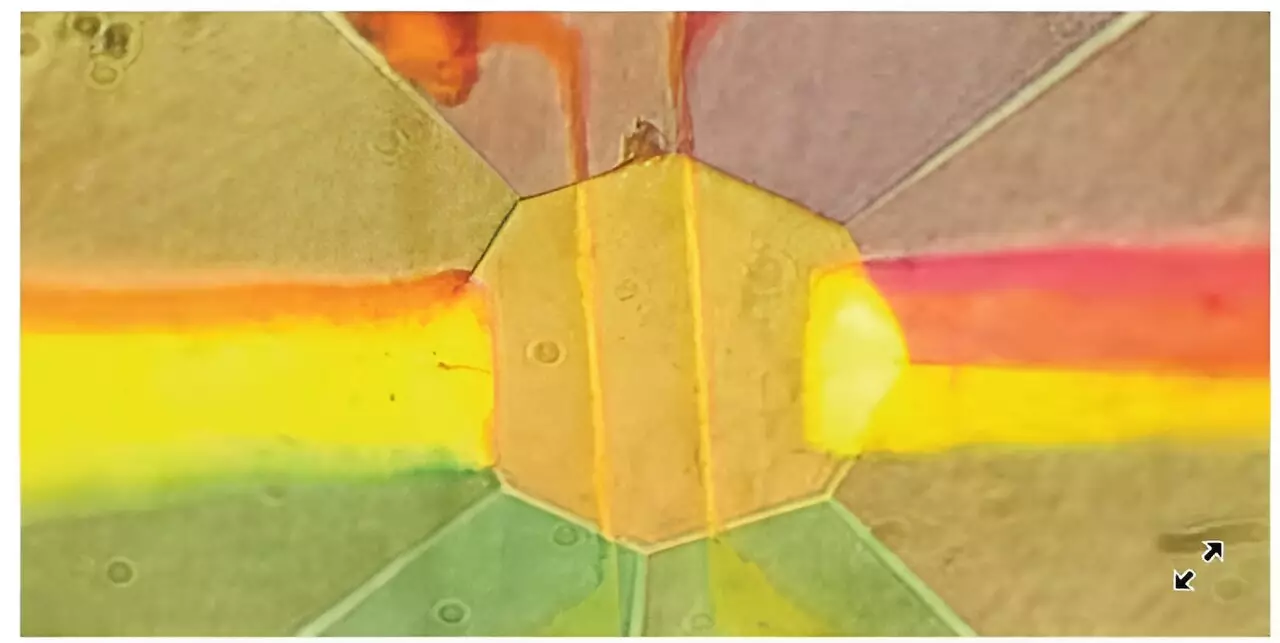Superconductivity is one of the most captivating phenomena in condensed matter physics, where materials exhibit zero electrical resistance when cooled below a critical temperature. This remarkable property, first discovered in 1911 by Heike Kamerlingh Onnes with metallic mercury, has spurred decades of research aimed at discovering materials that maintain superconductivity at higher temperatures. The ultimate goal is to find a superconductor that operates at ambient temperature, a breakthrough that could revolutionize everything from power grids to quantum computing.
As researchers delve deeper into the intricate mechanisms behind superconductivity, they face an intriguing challenge: many potentially superconducting materials only exhibit their exotic properties under extreme conditions, such as high pressure. The quest to unravel these conditions has led to exciting developments, particularly in the investigation of superconducting sulfur—an area recently illuminated by collaborative research from scientists in Germany and the United States.
High Pressure: A Key to Superconductivity
The fascination with sulfur as a potential superconductor lies in its behavior under enormous pressures. When subjected to greater than 90 GPa—an almost inconceivable pressure nearly a million times that of Earth’s atmosphere—sulfur transitions from a nonmetallic state to a metallic one. At even lower temperatures, it undergoes a transformation into a superconducting state, demonstrating the spectacular influences of external conditions on material properties.
In the latest study, researchers employed pressures of 160 GPa and temperatures around 17 Kelvin to successfully demonstrate that sulfur’s electrons form Cooper pairs, a fundamental requirement for superconductivity. The ability to induce superconductivity in sulfur through high pressure illustrates how mundane elements can yield extraordinary states of matter under the right circumstances. This revelation not only enhances the knowledge of sulfur but also opens the door for probing a plethora of materials that may be hiding superconductive properties.
Innovative Measurement Techniques
Developing effective measurement techniques is critical for understanding superconductivity under high pressure. Traditional methods have struggled to accurately probe materials at such extreme conditions due to complications arising from the very pressure itself. A significant breakthrough from this research team was the invention of a novel technique to effectively measure superconducting properties using a diamond anvil cell—a device capable of applying pressures up to 200 GPa on minuscule samples.
At the heart of this discussion is the innovative fabrication of planar tunnel junctions directly within the diamond anvil cell. By using tantalum pentoxide as the insulating material in these junctions, the researchers overcame the limitations posed by extreme pressures. The uniqueness of this approach allowed for the tunneling spectroscopy measurements to be taken well over the 100 GPa threshold, making it possible to explore the critical temperature of sulfur with unprecedented clarity.
Understanding Cooper Pairs and Superconducting Gaps
The analysis of Cooper pairs, the electron pairs that allow for the flow of superconducting current, is crucial for deciphering the properties of superconductors. In the context of the sulfur study, the investigation focused on measuring the superconducting gap—also referred to as the cleaving energy—which is intricately linked to the superconducting mechanism at play.
Through tunneling spectroscopy measurements, the research group was able to elucidate details about sulfur’s superconducting gap and its associated energy levels. The gap’s size and symmetry are directly related to the material’s superconducting nature, providing deep insights into the fundamental operations of this fascinating phenomenon. The findings reaffirmed sulfur’s classification as a type II superconductor and brought scientists a step closer to understanding the café of interactions that govern high-temperature superconductivity.
A Vision for the Future
Looking ahead, the potential applications of a more effective measurement technique are expansive. As stated by Feng Du from the Max Planck Institute for Chemistry, the aim is to develop a ‘microscope’ capable of probing the nuanced characteristics of superconductivity in a pressurized environment. Not only does this research pave the way for understanding current materials, but it also sets the stage for the exploration of more exotic substances—such as hydrides and nickelates—that could unveil further secrets of high-temperature superconductivity.
The knowledge gained from studying superconducting sulfur could catalyze future breakthroughs in the quest for room-temperature superconductivity, a goal eagerly pursued by scientists across various disciplines. If achieved, such discoveries could lead to transformative technologies with wide-reaching implications—essentially changing our entire approach to electrical conductivity.
Through relentless innovation, this research exemplifies how collaboration and new methodologies in measurement techniques can illuminate the vast unknowns of superconductivity. As scientists continue their journey into the mysteries of matter at extreme pressures, the possibility of unlocking new realms of technology remains tantalizingly close.


Leave a Reply